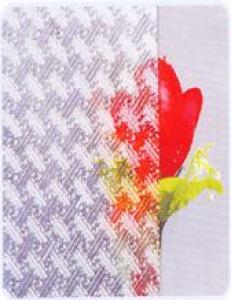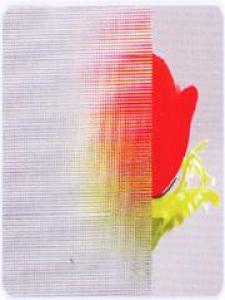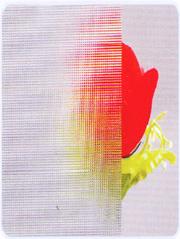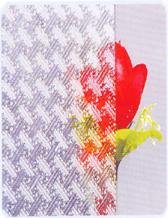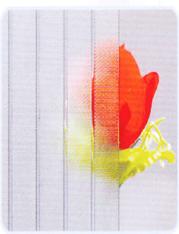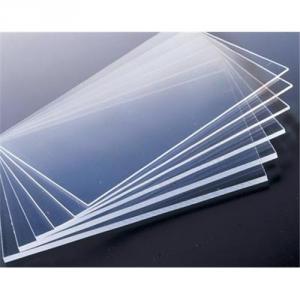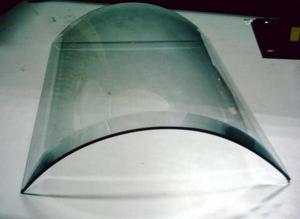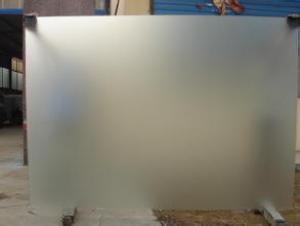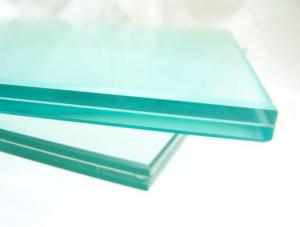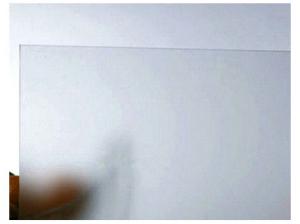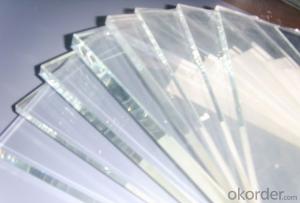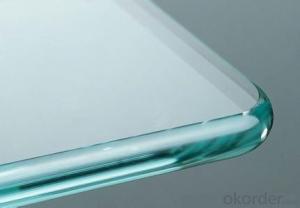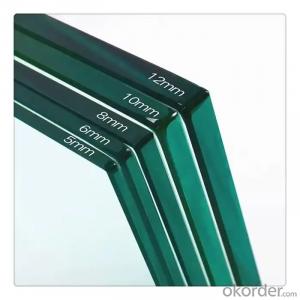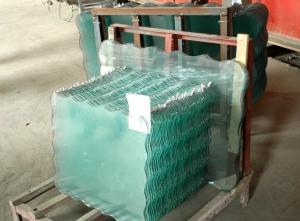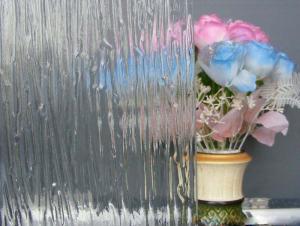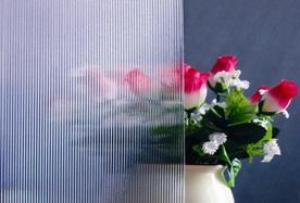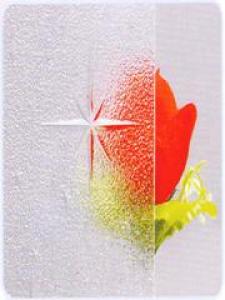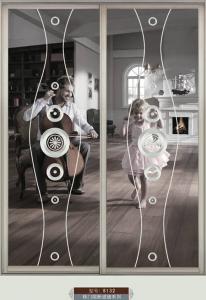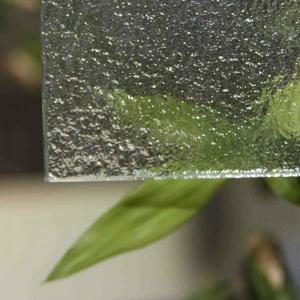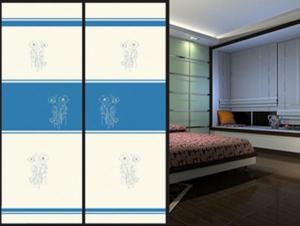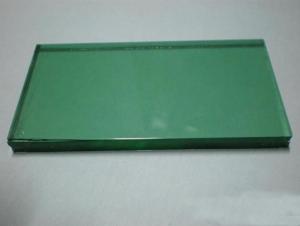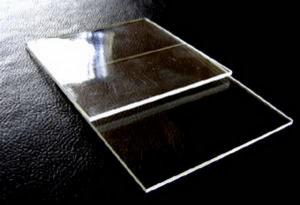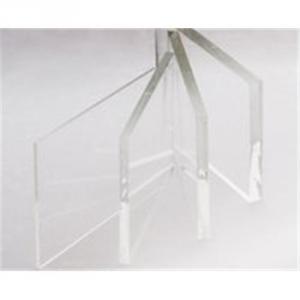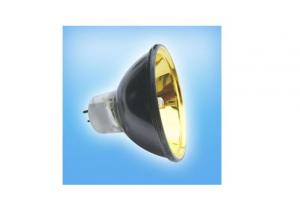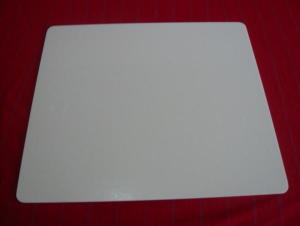Patterned Glass-wanji
- Loading Port:
- China Main Port
- Payment Terms:
- TT or L/C
- Min Order Qty:
- 100 m²
- Supply Capability:
- 10000 m²/month
OKorder Service Pledge
OKorder Financial Service
You Might Also Like
Patterned Glass is a kind of decorative translucent flat glass with embossed patterns on one or both surfaces. With the special properties of decorations, patterned glass can fully allow the light to pass through and on the other hand it can limit or prevent a clear view effectively, leading to a good "secret" result and a beautiful decorative effect.
Features:
1. Diversified and colorful patterns including Karatachi, Flora, Mistlite, Nashiji, Kasumi, Chinchilla, Moran, Aqualite, Masterlite, Millennium, Raindown, etc.
2. Distinctive and original design.
3. Stereoscopic effects and never-fading patterns.
4. Easy to be processed (cutted, ground, drilled, tempered, laminated, screen-printed, etc.)
Patterns for you to choose from:
Karatchi, Flora, Muro/Mora, Mistlite, etc.
Specifications:
Thickness: 3-5.5mm
Size: customized size
Applications:
Patterned Glass is widely used in all kinds of public and private places, such as offices, meeting rooms, hotels, hospitals, gymnasiums, bathrooms, washrooms, etc. It can also be applied in inlaid doors, glass furniture, shower rooms, colored crystal glass, glass partitions, bathroom doors and windows and other areas.
- Q: What material is made of bullet proof glass?
- Bullet proof glass is made of glued laminated material, which is glued together with many pieces of glass or high strength organic board. Generally has the following three layers of structure:Bearing layer: firstly, the layer is broken by impact, and the glass with large thickness and high strength is used. It can destroy warhead or change warhead shape, and make it lose the ability to move forward.Transition layer: the general use of organic adhesive material, strong adhesion, light fastness, can absorb part of impact energy, change the direction of the bullet forward. A very strong and transparent chemical film is sandwiched between laminated glass. This can not only effectively prevent bullet shooting, but also has the properties of surge resistance, explosion resistance, shock resistance and no cracks after impact.Safety protection layer: this layer is made of high strength glass or high strength transparent organic material. It has better elasticity and toughness, can absorb most impact energy, and ensure that the bullet can not penetrate the layer
- Q: How is glass made?
- Technological process:1, raw materials broken: the above raw materials broken into powder;2, weighing: according to the list of ingredients, called a certain amount of powder;3, will be called: the mixed powder mixing, stirring into a batch (colored glass and colorant);4, melting: the mixture into the glass furnace, melting at 1700 degrees into glass;5, forming: the glass liquid into a tin bath (float), pull machine (lattice method), rolling machine (rolling method, adding metal wire is wire glass), forming the flat glass;6, annealing: the molding of glass products into the annealing furnace annealing, balance the stress, to prevent self cracking.
- Q: Cement / glass raw materials, equipment, principle, composition, characteristics, uses and types
- This is a useful feature because it prevents edges from becoming rounded, loss of tooth shape, and disappearance of surface imprinting, which is conducive to a vivid appearance. Kaolin hydrated aluminum silicate (Al2O3 2SiO2 2H2O), plays the role of adhesive to improve the forming ability of non sintered ceramic. Because of its opacity, the content is minimal. Although many repair ceramics contain free crystalline phases of quartz, they should be described as glass; rather, high melting ceramics can be called feldspathic glass". In the production of medium and low melting ceramics, the manufacturers mix various ingredients to melt them and then quench them in water. Quenching causes internal stresses, causing large cracks and fractures throughout the glass. This process is called the heating of glass material, and the product is called glass material. The brittle structure thus formed can easily be ground into powder for use by the porcelain artist. During the pre melting of ceramics, thermochemical reactions occur between the components, and the shrinkage associated with this reaction occurs. In subsequent chamber sintering, powders are fused together to form restorations. The melting temperature depends on the composition of the glass and must be carefully controlled to minimize thermoplastic flow. Potash (potash) and sodium (soda) is a carbonate or natural minerals (such as feldspar) to be introduced in the form of.
- Q: What are the raw materials of glass fiber reinforced plastic?
- It is a kind of composite material made of glass fiber and its products (glass cloth, band, felt, yarn, etc.) as reinforcing material and synthetic resin as base material.
- Q: The main raw material for the impact of float glass cost?
- Process: mainly to see whether the enterprise has mastered the key technology of float process control. For example, master the melting technology, need to have stripe analysis equipment to monitor, can detect fault signs in advance, timely fine-tuning, can avoid major accidents, development. In the case of melting stability, general forming and annealing are relatively easy to achieve stability; the products produced by such a line are stable and the cost will be greatly reduced. But at present, the only part of enterprises to master the technology, many enterprises are repeatedly in fluctuation, a fluctuation of about 3-7 days, so the product quality can not guarantee long-term stability, there is no guarantee to do the processing of glass, benefits decline.
- Q: Tempered and reinforced glass
- Tempered glass is a safety glass. It is very small and won't cause serious damage when broken. Toughened glass does not belong to safety glass. Large pieces of debris can cause serious damage.
- Q: Who can tell me the raw material and function of the flashy glass?
- Float and other molding methods, its advantages are: suitable for efficient manufacturing quality of flat glass, such as no wave, uniform thickness, smooth surface, upper and lower are parallel to each other; the scale of the production line is not affected by the forming method, energy consumption per unit of product is low; the finished high utilization rate; easy to scientific management and implementation across the board mechanization, automation, high labor productivity; continuous operation cycle of up to several years, is conducive to stable production; to provide suitable conditions for the on-line production of some new varieties, such as electric float reflective glass, annealing, cold end spraying film glass surface treatment etc..
- Q: What raw material is the front bumper of the car made of?
- The front bumper of the car is made of toughened glass.
- Q: What kinds of ingredients are the glass?
- Is usually made of sand, sodium carbonate and calcium carbonate eutectic is prepared; also available mixture of sodium sulfate and sodium carbonate to replace carbon melting. Some other glass such as potassium glass, is a relatively high temperature, hard and chemical resistance of glass in molten glass with potassium carbonate to replace sodium or potassium sulfate prepared, mainly used in chemical container manufacturing laboratory commonly used.
- Q: What materials are needed for the production of glass bottles and what are their proportions?
- The glass is the main component in the manufacturing process of quartz sand, quartz sand is combined with other chemical materials at high temperature (1300 degrees Celsius) crystallized after firing the cooling of the body, with a hard, abrasion resistance, corrosion resistance and high transmittance characteristics, its wide application has a long history.
1. Manufacturer Overview
| Location | Shandong, China |
| Year Established | 2008 |
| Annual Output Value | Above US$ 100 Million |
| Main Markets | North America; South America; Eastern Europe; Southeast Asia; Africa; Oceania; Mid East; Eastern Asia; Western Europe; Northern Europe; Southern Europe |
| Company Certifications | ISO 9001:2000;ISO 9001:2008;QS-9000;ISO 14001:2004 |
2. Manufacturer Certificates
| a) Certification Name | |
| Range | |
| Reference | |
| Validity Period |
3. Manufacturer Capability
| a) Trade Capacity | |
| Nearest Port | Qingdao, Dalian |
| Export Percentage | 41% - 50% |
| No.of Employees in Trade Department | 3-5 People |
| Language Spoken: | English; Chinese |
| b) Factory Information | |
| Factory Size: | 30,000-50,000 square meters |
| No. of Production Lines | 9 |
| Contract Manufacturing | OEM Service Offered |
| Product Price Range | Average |
Send your message to us
Patterned Glass-wanji
- Loading Port:
- China Main Port
- Payment Terms:
- TT or L/C
- Min Order Qty:
- 100 m²
- Supply Capability:
- 10000 m²/month
OKorder Service Pledge
OKorder Financial Service
Similar products
Hot products
Hot Searches
